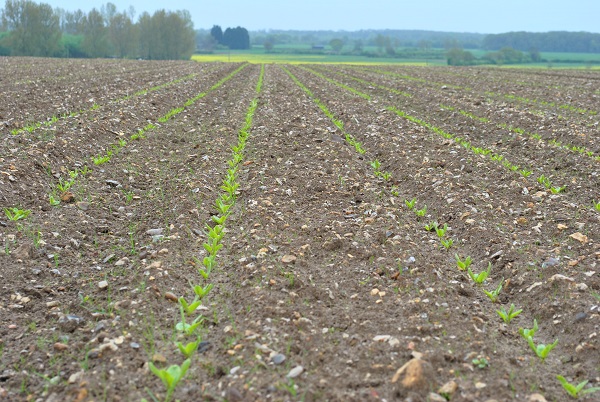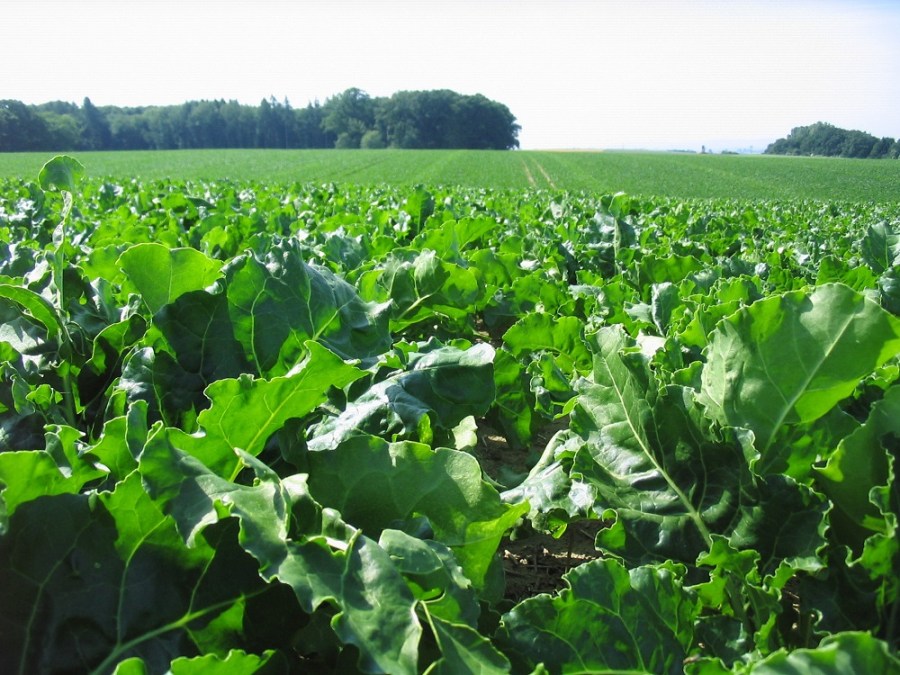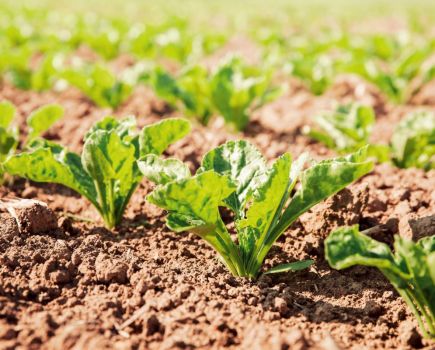The 2019 BBRO Recommended List for sugar beet varieties was published last month. CPM takes a look at what the newly approved varieties have to offer.
Sowing early to try to evade pests is agronomically sound practice.
By Lucy de la Pasture
Resistance to bolting is a common theme amongst the five new additions to the BBRO/BSPB Recommended List (RL) and the Descriptive List (DL), though some are better than others. Jura, Gauguin and Kortessa KWS are the three with most resistance and suitable for early drilling (before mid-March).
Two of the new RL varieties, Jura and Gauguin are also BCN tolerant. With the high yields that breeders have managed to breed into these varieties, they’re recommended for general use and not restricted to the DL list, as was the case prior to the 2018 RL.
Philina KWS was added to the DL for use specifically where AYPR (rhizomania) has been identified in a field and provides a superior yield to the variety it replaces. The yield results on the DL and for the BCN varieties are in the absence of these problems, points out Mike May, chairman of the RL Board.

New variety Gauguin, drilled 23 March in Norfolk, combines low early-bolting with BCN tolerance and delivers sugar yields equal to and greater than many leading varieties.
“Although 2017 trials were affected by the dry cold conditions at the start of the season, the control varieties in the trials still managed to achieve a mean yield of 114 adjusted t/ha with new varieties offering up to a 7.6% yield increase above that,” he comments
“It’s also good to see some of the new varieties with very low bolting, an important requirement for many UK sugar beet growers,” he adds.
Richard Powell, managing director of Strube UK, believes good bolting resistance will become of increasing importance as the industry faces new challenges with the loss of plant protection products.
In the absence of neonicotinoid seed treatments, getting the crop quickly up and away is likely to become a major tactic to minimize the threat of some of the pests they protect the crop against, such as the aphids that can transmit Virus Yellows.
“The ability to drill a variety earlier, without the risk of undue bolting, will increase in significance. This is so that we can achieve sugar beet plants with 12 true leaves by early May, making the plants much less attractive to aphids. Growers should now be concentrating on early bolting resistance more than ever,” he says.
New variety Gauguin, has Rhizomania resistance and Beet Cyst Nematode (BCN) tolerance, has joined the RL this year. “Gauguin is an good demonstration of the breeding advances that have been made, with a BCN tolerant variety delivering sugar yields equal to and greater than many leading varieties.
“Gauguin also has very low early-sown bolting (the lowest of any Listed variety in 2017) so is an excellent choice for early drilling. This character, combined with its high sugar yield and BCN tolerance, makes it a good, high-value choice to enable growers to address and mitigate future threats,” he says.
Low bolting has been at the heart of SESVanderHave’s breeding programme for many years, says UK general manager Ian Munnery. “We’ve long recognised it’s crucial for British growers to be able to drill sugar beet as early as possible in our maritime climate.”
Early sowing of sugar beet seed extends the growing season by up to six or eight weeks so increases the crop’s yield potential. The flip-side is that early sowing also increases the risk of bolters that can impair yield and hamper harvest. Ian stresses it’s important when studying the BBRO RL to pay attention to both yield and the ‘Early Sown Bolters’ data.
As bolting is a response to stress and cold, the key thing to look at is the consistency of performance over the three years provided by the RL, points out SESvanderHave’s UK research and development manager Richard Robinson.
“Bolting is a response to environmental factors, especially temperature. No variety provides a complete safeguard against bolting, but Jura’s score of just over 3000/ha provides much greater assurance than other varieties with scores of two or three times that level.
“Including Jura in the mix of varieties sown will enable growers to capture that early sowing bonus yield with far more certainty of success,” he adds.
But it’s not just about achieving yield potential, Ian points out. Jura has tolerance to Beet Cyst Nematode (BCN) and resistance to Rhizomania. BCN is an increasing threat in the UK’s sugar beet growing areas and Jura provides tolerance without the depression in yield seen in earlier varieties. The combination of traits in Jura provides growers with a variety that can assist in their integrated management of pests and diseases.
“Getting the crop quickly through its growth stages to reach maturity is important. Plants are most vulnerable to attack at their juvenile stage – so sowing early to try to evade pests is agronomically sound practice.”
He illustrates his point by pointing out the optimum temperature for BCN to hatch is 18-20⁰C so if a variety can be planted early at lower temperatures the sugar beet plants have fewer nematodes to contend with during their early growth stages.
“Our trials experience in the UK and the message we keep getting from growers is how important low bolting and consistent performance are. That’s why we continue to see a large part of the UK sugar beet crop sown with varieties such as Firefly, Bloodhound and Aurora contributing to exceptional farm performance. It’s also why proven performers like Cayman endure after seven years of recommendation whilst many others fade away after only a year or so.”
New sugar beet varieties from KWS for 2019 combine high yield potential with good early drilling performance and resistance to the AYPR strain of rhizomania, says the breeder.
Kortessa KWS has a yield of 106.2% of controls putting it in the top three highest yielding varieties on the new RL. It’s also well suited to an early drilling slot as the second highest yielding variety suitable for sowing before mid-March after Daphna, the highest yielding variety on the RL for the second year running.
Kortessa comes into its own with the lowest bolting score of any high-yielding variety for sowing after mid-March, says Ben Bishop, KWS sugar beet UK-country manager. It also has an good resistance score for rust, he adds.
“Kortessa is another step forward in yield progression at more than 6% higher than the average of controls. Its yield potential, solid performance across all sowing dates and high resistance against one of the most prevalent diseases of recent years makes it a compelling proposition for those with a long growing season,” he says.
Another variety from KWS has been added to the new DL for 2019. Philina KWS is in the top-five highest yielding varieties at 104.9% of controls, while its resistance to the AYPR strain of aggressive rhizomania will be welcomed by those affected by this devastating disease, says Ben.
“Yielding comfortably ahead of the control varieties, the addition means those with land affected by AYPR now have a genuinely high yielding alternative to Sandra KWS. This will improve performance across the rotation and further support yields across the industry,” he adds.
Although not new for 2019, KWS expects the UK’s most widely grown variety of the past three seasons, Sabatina KWS to be popular again in 2019.
“At more than 3% ahead of controls, Sabatina is in the top-five highest yielding varieties and with noted yield increases among late lifters (after Nov) and the best rust resistance of any fully recommended variety we expect it to be popular again in 2019,” says Ben.
KWS also announced that it will increase the amount of seed available to growers for the 2019 season. “Bred specifically for the UK, Salamanca is a high yielding variety (103.4%) and offers one of the best combinations of disease resistance of the fully recommended varieties on the RL, with scores of 5.7 and 5.6 for rust and powdery mildew respectively.
“Best sown after mid-March, Salamanca will appeal to growers seeking a range of high-yielding varieties to spread the drilling workload and manage disease risk,” he says.
Retaining its place as the highest yielding variety in official trials for the second year running, Daphna is unique as the only variety to combine BCN tolerance with a yield well over 6% higher than the average of controls.
“Its strong disease resistance, combined with suitability for drilling before mid-March, make it a great choice for growers in 2019,” he adds.
Newly recommended variety BTS 1140 reflects the increasing yield potential of sugar beet, according to agents Limagrain UK. This comes hand in hand with high sugar content and favourable on-farm agronomics such as low bolting figures at normal sowing date and very good disease resistance.
Bred by Betaseed, BTS 1140 has a yield potential notably above the most widely grown varieties in 2018, yielding 107.6% (adjusted tonnes) over three years of trials. BTS 1140 also has a high sugar content of 18%.
This significant 2-3% increase in yields seen each year in newly recommended sugar beet varieties on the RL is very exciting for the UK’s sugar beet growers, says Bram Van der Have, sugar beet consultant for Limagrain. This year the newly recommended varieties offer a 7.6% increase over the control varieties, he notes.
“We’re in the fortunate position where breeders are still able to push yields without compromising the sugar content – and this is at a time when many other arable crop yields have plateaued.”
The value and importance of on-farm characteristics of sugar beet to UK growers is also reflected in this recommendation, he adds.
“While yield and sugar content are the top criteria for choosing a new sugar beet variety, factors such as establishment and bolting tolerance are also very important – particularly when deciding which variety is the best for a certain situation.
“For those looking to drill from mid-March onwards, as most growers will have done this season, BTS 1140 fits this drilling slot very well. It has good bolting tolerance, with only 14 bolters/ha (per 100,000 plants) which is one of the lowest on the RL for normal sowing. This is combined with good emergence characteristics and a good tolerance to rust. It’s also rhizomania tolerant,” he says.
“BTS 1140 is likely to appeal to the grower who wants to take the next step up in yields, and we would encourage growers to try it and take part in raising the bar in sugar beet production even higher.”
Before ordering BCN or AYPR tolerant varieties, growers should discuss options with the BBRO and breeders who will have more information on their performance in the presence of the problem,” advises Mike.
The RL/DL table can be found on the BBRO website (bbro.co.uk) along with the supplementary tables showing the three-year data for the varieties, plus seed provenance, vernalisation experienced in the early sown bolter trials over the last three years and juice impurities.
Ian stresses the importance of properly studying this BBRO information on varieties and highlights the provenance of seed which shows how long the seed has been in full commercial use.
“The data means growers can choose varieties with genetics that have been sufficiently tested under UK conditions and are performing well on farm,” he comments.




